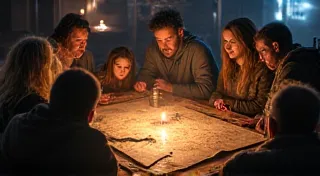Strategy Guide: Mastering Ticket to Ride
Ticket to Ride is a gateway game for many into the world of tabletop gaming, but mastering it takes more than just collecting train cars and claiming routes. This comprehensive guide delves into advanced strategies, route planning techniques, and opponent psychology to elevate your gameplay and claim victory.
Understanding the Basics - Beyond the Routes
While securing destination tickets and connecting cities are vital, true mastery goes deeper. Pay close attention to the distribution of train car colors, the locations of cities on your tickets, and the frequency with which specific colors are drawn. Early game analysis is key!
Route Planning: The Art of Flexibility
Don't lock yourself into a rigid plan. The beauty of Ticket to Ride lies in its adaptability. Your initial destination tickets might be quickly thwarted by an opponent claiming a crucial route. Having backup tickets, and being prepared to shift your strategy is paramount. Consider these factors:
- Ticket Value vs. Route Difficulty: Always weigh the point potential of a ticket against the likelihood of securing the necessary routes. A high-value ticket blocked by an opponent is worth less than a lower-value ticket you can reliably complete.
- Route Blocking Potential: Consider how your route choices might impact your opponents' ability to complete their tickets. Sometimes a slightly longer or more difficult route is worth it to deny a crucial connection for another player.
- Double Routes: These are hot property! Be prepared to fight for them, but also recognize when it's best to concede and pursue alternative routes. Consider if blocking a double route effectively shuts down an opponent.

Advanced Techniques: The Psychological Game
Ticket to Ride isn't just about trains; it’s about understanding your opponents. Observe their actions, deduce their destination tickets, and anticipate their moves. Here are some advanced psychological techniques:
- Ticket Reveals: Pay close attention to which tickets players discard. This gives valuable clues about their goals.
- Route Blocking as Misdirection: Sometimes, claiming a route that *seems* beneficial to you can be a bluff to mislead your opponents about your true objectives.
- Train Car Collection: Observe which colors your opponents are frequently collecting. Are they hoarding a specific color, suggesting a route they desperately need?
- Timing is Everything: The timing of your claims can be a powerful tool. Claiming a vital route just before an opponent is ready to complete their ticket can be devastating.
Color Strategy: Adapting to the Draw
While aiming for specific colors is ideal, flexibility is key. Be prepared to adapt your strategy based on the cards you draw. If a color is scarce, consider alternatives or try to trade with other players.
- Wild Cards (Locomotives): These are extremely valuable. Use them judiciously to claim crucial routes or to complete tickets that require multiple colors.
- Color Distribution Awareness: The distribution of colors varies by map. Understanding the typical distribution can inform your drawing decisions.

Specific Map Considerations
While the core strategy remains consistent, adapting to the specific map is essential. Each map presents unique challenges and opportunities:
- Ticket to Ride: Europe: Tunnels offer a unique element of uncertainty, requiring extra locomotives. Stations allow for alternative routes, adding a new layer of strategy.
- Ticket to Ride: Nordic Countries: Ferry routes require careful planning and resource management.
- Ticket to Ride: New York: Limited routes create a highly competitive environment.

Conclusion: Become a Ticket to Ride Master
Mastering Ticket to Ride requires a blend of strategic planning, adaptability, and psychological awareness. By applying these techniques, paying attention to your opponents, and constantly evaluating your options, you’re well on your way to becoming a Ticket to Ride champion. Good luck, and happy railroading!



![Game News: Board Game Kickstarter Spotlight – [Project Name]](/thumbs/game-news-kickstarter-spotlight.webp)

